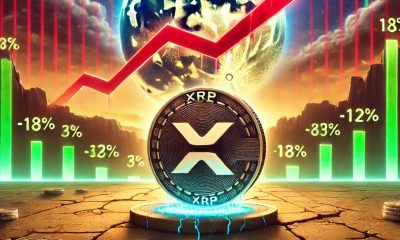Market
Orbiter Finance Hits $50 Million Revenue Amid Layer 2 Boom
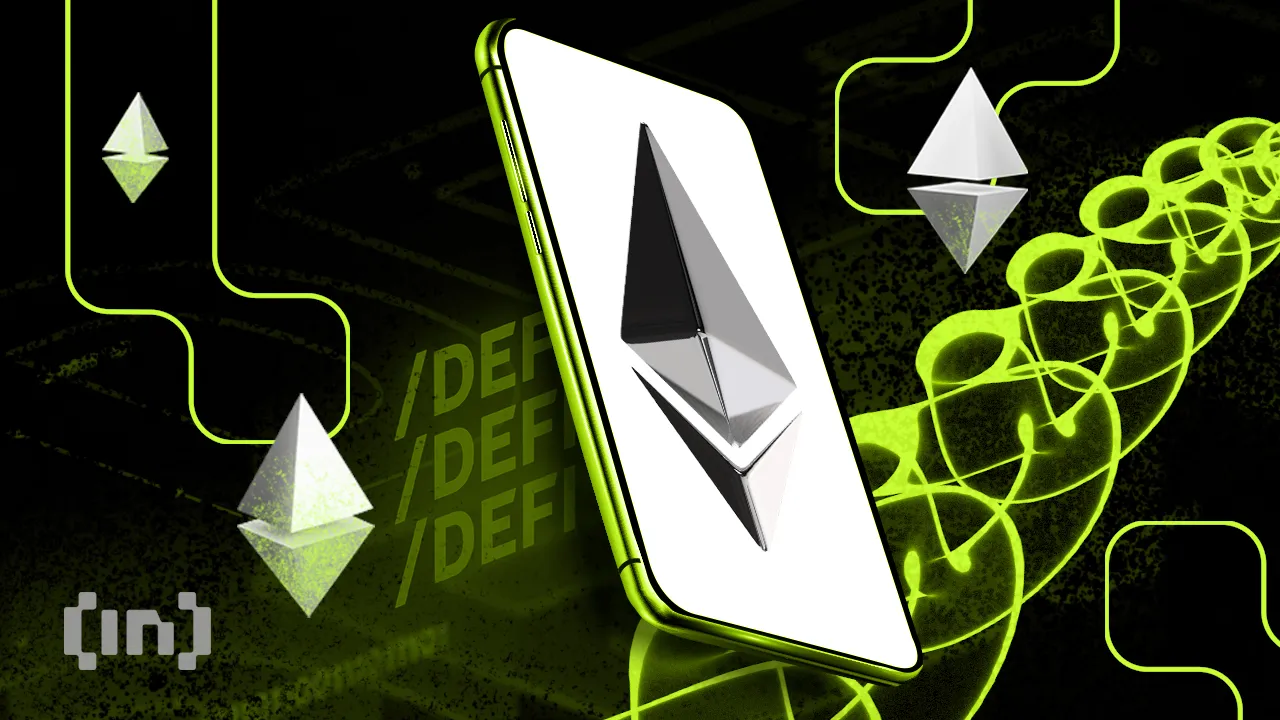
Orbiter Finance secured over $50 million in annual revenue, driven by growing Layer-2 (L2) adoption. This milestone positions it among the most profitable decentralized cross-chain L2 protocols.
L2 solutions enhance blockchain scalability by offloading transaction processing from the main chain. This reduces congestion, lowers fees, and boosts transaction throughput, driving demand for such solutions.
Orbiter Finance Records $50 Million Annual Revenue
Orbiter Finance generated over 20,000 Ethereum (ETH) (around $52.7 million) in year-to-date revenue, surpassing the combined earnings of all other third-party cross-chain bridges. This achievement positions Orbiter above Base, the second-largest Layer-2 scaling solution by total value locked (TVL), which reported $39.075 million over the same period.
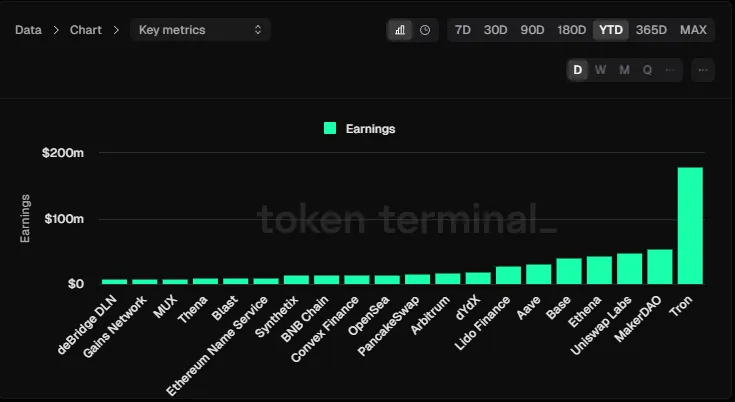
Orbiter Financer operates within the Ethereum ecosystem, providing connections within the mainnet. It facilitates asset transfers across multiple L2 networks, such as zkSync and Arbitrum, among others. The team says the protocol has processed over 24 million transactions so far, with more than 4 million users globally.
“Cross-chain transactions are increasingly expected to occur without users directly interacting with a bridging protocol’s interface. The Orbiter team is currently focused on enabling seamless cross-chain transactions and ensuring that users can interact with the blockchain without perceiving any fragmentation among Layer-2 solutions,” Iris Cheung, Orbiter Co-Founder, told BeInCrypto.
Read more: A Beginner’s Guide to Layer-2 Scaling Solutions
Reportedly, Orbiter Finance has processed over $16 billion in transaction volume. This success is partly attributed to the Maker system, a key revenue generation engine within the protocol.
“We saw firsthand the potential of their innovative cross-chain liquidity approach. Their bold integration of zk technology paid off, with Orbiter now holding over 50% of the cross-chain market share. Orbiter’s bet on zk and Ethereum L2s in 2023 has driven their impressive growth. With an ambitious roadmap for a fully interoperable cross-rollup ecosystem in 2024, Orbiter is set to remain a leader in DeFi, and we’re excited to see their continued success,” said Suji Yan, the founder of Mask Network.
L2s remain a popular narrative in the crypto market due to the push for better scalability. These solutions tackle blockchain challenges, especially on networks like Ethereum, by enabling faster and cheaper transactions while ensuring strong security and decentralization.
The Allure of Ethereum L2 Scaling Solutions
Based on the L2 dashboard on Dune Analytics, the total bridged TVL in L2 networks is $18.19 billion. This figure highlights the growing adoption and utilization of L2 solutions by users and decentralized applications (dApps), showing their importance in strengthening blockchain scalability and efficiency.
Major players in the L2 space include Arbitrum (ARB), Optimism (OP), and Base, which all use optimistic rollups. These rollups are often associated with long withdrawal periods; for instance, Base withdrawals can take about seven days, which is a considerable wait for users wanting quick access to their funds.
Read more: What Is Arbitrum? Everything You Need To Know
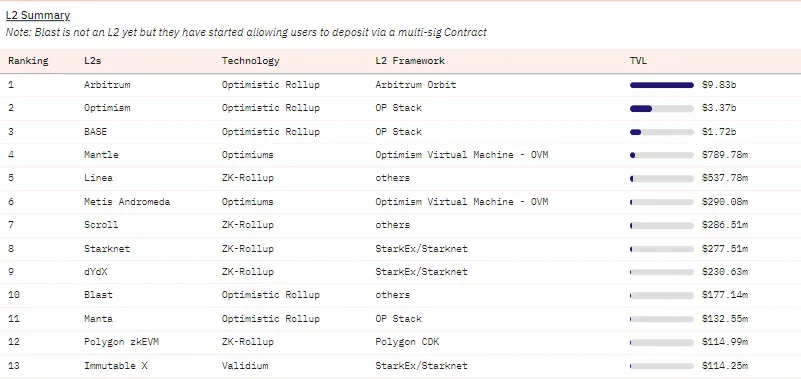
The delay may be caused by Optimism’s anti-fraud system, which is reportedly ‘optimistic’ about participants’ honesty. It considers all transactions valid, bundles them together, and submits them to the L1 blockchain.
However, users can challenge transactions and submit potential fraud proofs as part of the optimistic rollup’s security mechanism. This leads to a delay in the form of a ‘Challenge period.’ This explains why withdrawals from Ethereum to Base may take a few minutes, whilst those from Base to Ethereum could take days.
Disclaimer
In adherence to the Trust Project guidelines, BeInCrypto is committed to unbiased, transparent reporting. This news article aims to provide accurate, timely information. However, readers are advised to verify facts independently and consult with a professional before making any decisions based on this content. Please note that our Terms and Conditions, Privacy Policy, and Disclaimers have been updated.
Market
Report Alleges Massive Meme Coin Sniping on Pump.fun

According to a new report from Pine Analytics, token deployers on Pump.fun systematically funded sniper wallets to buy their own meme coins. This impacted over 15,000 token launches on the platform.
These sniper wallets operated primarily during US trading hours, executing standardized, profitable strategies. Unrelated bot activity obscures their behavior, making it extremely difficult to isolate these wallets—and they can readily adapt to new countermeasures.
Snipers Roam Free on Pump.fun Meme Coins
Pump.fun has remained one of the most popular meme coin launchpads on Solana despite persistent controversies and other criticism.
However, Pine Analytics’ new report has uncovered a new controversy, discovering systematic market manipulation on the platform. These snipes include as much as 1.75% of all launch activity on Pump.fun.
“Our analysis reveals that this tactic is not rare or fringe — over the past month alone, more than 15,000 SOL in realized profit was extracted through this method, across 15,000+ launches involving 4,600+ sniper wallets and 10,400+ deployers. These wallets demonstrate unusually high success rates (87% of snipes were profitable), clean exits, and structured operational patterns,” it claimed.
Solana meme coin deployers on Pump.fun follow a consistent pattern. They fund one or more sniper wallets and grant them advance notice of upcoming token launches.
Those wallets purchase tokens in the very first block and then liquidate almost immediately—85% within five minutes and 90% in just one or two swap events.

Pump.fun meme coin developers exploit this tactic to create the appearance of immediate demand for their tokens. Retail investors, unaware of the prior sell‑off, often purchase these tokens after the snipe, giving developers an unfair advantage. This constitutes market manipulation and erodes trust in the platform.
Pine Analytics had to carefully calibrate its methods to identify genuine snipers. Apparently, 50% of meme coin launches on Pump.fun involve sniping, but most of this is probably bots using the “spray and pray” method.
However, by filtering out snipers with no direct links to developer wallets, the firm missed projects that covered their tracks through proxies and burners.
In other words, the meme coin community does not have adequate defenses against systematic abuse on Pump.fun. There are a few possible ways that the platform could flag repeat offenders and sketchy projects, but adaptive countermeasures could defeat them. This problem demands persistent and proactive action.
Unfortunately, it may be difficult to enact such policies. Meme coin sniping is so systematic that Pump.fun could only fight it with real commitment.
Analysts think that building an on-chain culture that rewards transparency over extraction is the best long-term solution. A shift like that would be truly seismic, and the meme coin sector might not survive it.
Disclaimer
In adherence to the Trust Project guidelines, BeInCrypto is committed to unbiased, transparent reporting. This news article aims to provide accurate, timely information. However, readers are advised to verify facts independently and consult with a professional before making any decisions based on this content. Please note that our Terms and Conditions, Privacy Policy, and Disclaimers have been updated.
Market
Solana Leads Blockchain Metrics as SOL Momentum Builds

Solana (SOL) continues to show strength across multiple fronts, maintaining a bullish structure on its Ichimoku Cloud chart while gaining momentum in key market metrics. The BBTrend indicator has turned higher again, signaling renewed buying pressure after a brief cooldown.
On-chain activity remains strong, with Solana leading all blockchains in DEX volume and dominating fee generation thanks to the explosive growth of meme coins and launchpad activity. With SOL now trading above a key resistance level, the path is open for further upside—though a loss of momentum could still trigger a retest of lower supports.
Solana Maintains Bullish Structure, but Momentum Faces Key Test
On Solana’s Ichimoku Cloud chart, the price is currently above the Kijun-sen (red base line) but has dipped below the Tenkan-sen (blue conversion line), signaling weakening short-term momentum.
The flattening Tenkan-sen and price behavior suggest possible consolidation or the early stages of a pullback. Still, with the price holding above the Kijun-sen, medium-term support remains intact.
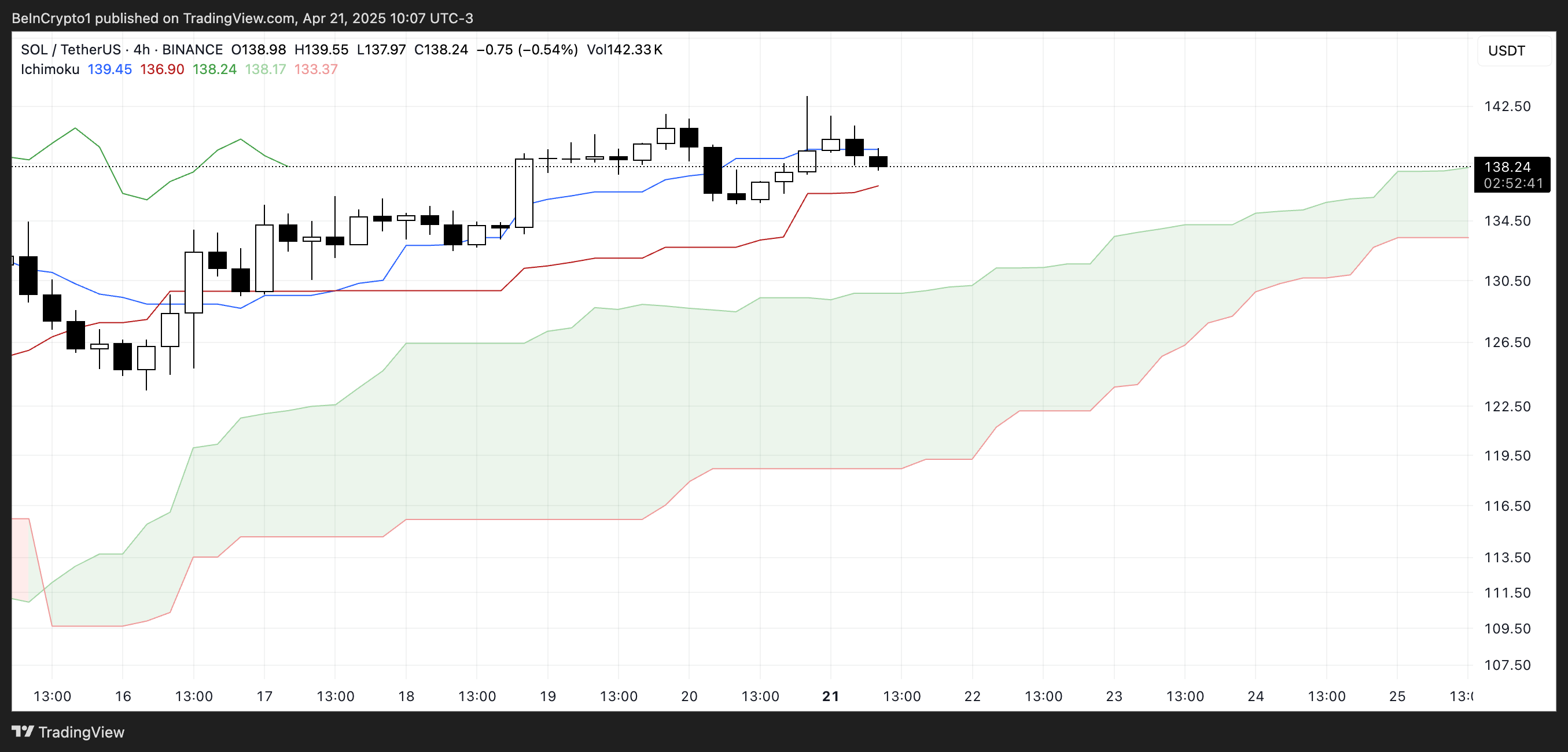
The overall Ichimoku structure remains bullish, with a thick, rising cloud and leading span A well above span B—indicating strong underlying support.
If Solana finds support at the Kijun-sen and climbs back above the Tenkan-sen, the uptrend could regain strength; otherwise, a test of the cloud’s upper boundary may follow.

Meanwhile, Solana’s BBTrend is currently at 6, extending nearly ten days in positive territory after peaking at 17.5 on April 14. The recent increase from 4.26 to 6 suggests renewed bullish momentum following a brief cooldown.
BBTrend, or Bollinger Band Trend, tracks the strength of price movement based on Bollinger Band expansion.
Positive values like the current one point to an active uptrend, and if the BBTrend continues to rise, it could signal stronger momentum and potential for another upward move.
Solana Dominates DEX Volume and Fee Generation as Meme Coins Drive Ecosystem Growth
Solana has once again claimed the top spot among all chains in DEX volume, recording $15.15 billion over the past seven days. The combined total of Ethereum, BNB, Base, and Arbitrum reached $22.7 billion.

In the last 24 hours alone, Solana saw $1.67 billion in volume, largely fueled by its booming meme coin ecosystem and the ongoing launchpad battle between PumpFun and Raydium. Adding to this good momentum, Solana recently surpassed Ethereum in Staking Market Cap.

When it comes to application fees, Solana’s momentum is just as clear. Four of the top ten fee-generating apps over the past week—PumpFun, Jupiter, Jito, and Meteora—are Solana-focused.
Pump leads the pack with nearly $18 million in fees alone.
Solana Breaks Key Resistance as Uptrend Targets Higher Levels, but Risks Remain
Solana has finally broken above its key resistance at $136, flipping it into a new support level that was successfully tested just yesterday.
Its EMA lines remain aligned in a bullish setup, suggesting the uptrend is still intact.
If this momentum continues, SOL price could aim for the next resistance zones at $147 and $152—levels that, if breached, open the door to a potential move toward $179.
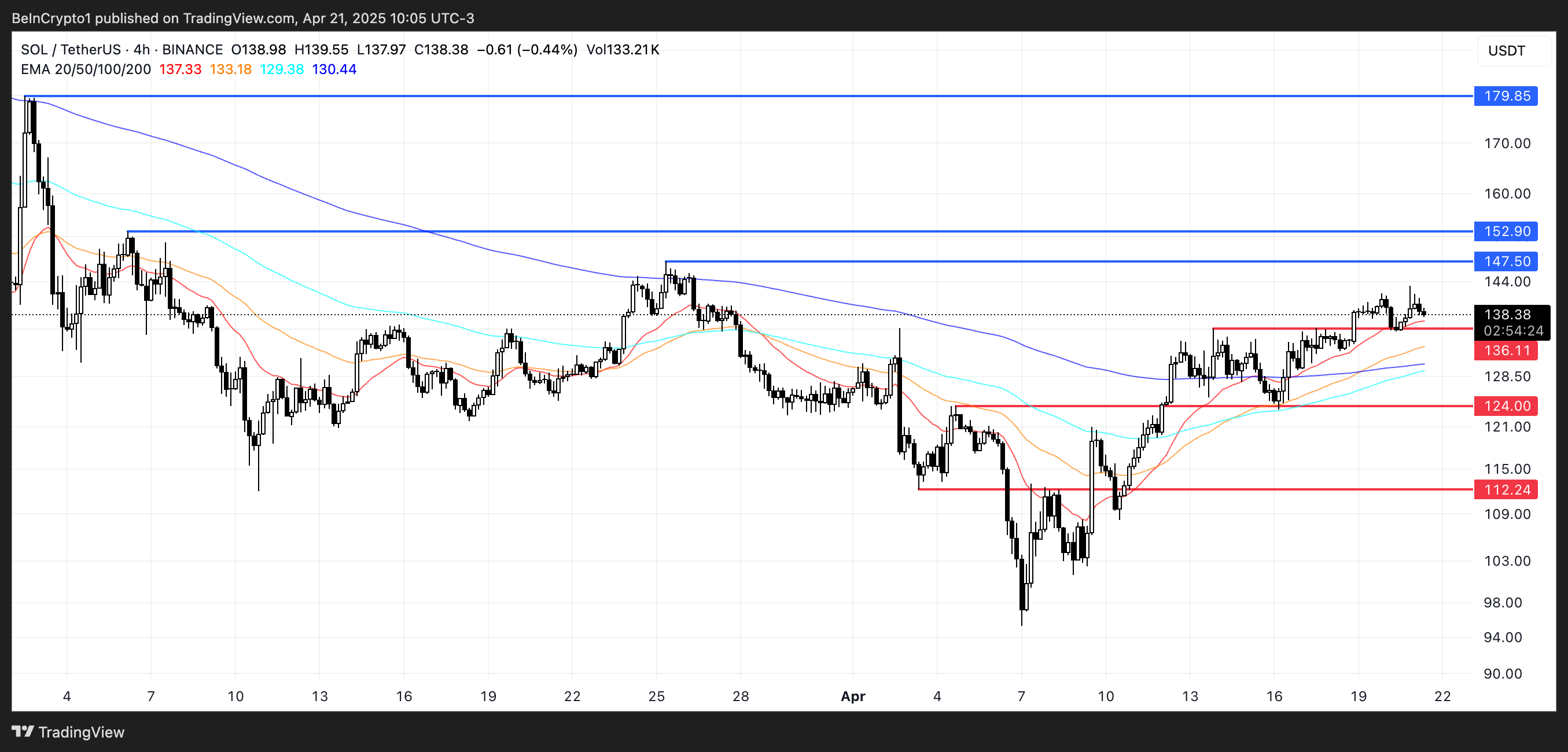
The current structure favors buyers, with higher lows and strong support reinforcing the trend.
However, if momentum fades, a retest of the $136 support is likely.
A breakdown below that level could shift sentiment, exposing Solana to deeper pullbacks toward $124 and even $112.
Disclaimer
In line with the Trust Project guidelines, this price analysis article is for informational purposes only and should not be considered financial or investment advice. BeInCrypto is committed to accurate, unbiased reporting, but market conditions are subject to change without notice. Always conduct your own research and consult with a professional before making any financial decisions. Please note that our Terms and Conditions, Privacy Policy, and Disclaimers have been updated.
Market
Crypto Firms Donated $85 million in Trump’s Inauguration

According to a new report, 15 firms and individuals from the crypto industry donated more than $100,000 to President Trump’s Inauguration, totaling over $85 million.
Almost all of these companies apparently received direct or indirect benefits from Trump’s administration. This includes dropped legal proceedings, lucrative business partnerships, participation in Trump’s Crypto Summit, and more.
Crypto Industry Went All-In on Trump’s Inauguration
Since promising to bring friendlier regulations on the campaign trail, Donald Trump attracted a reputation as the Crypto President.
Trump’s Inauguration festivities included a “Crypto Ball,” and several prominent firms made donations for these events. Today, a report has compiled all crypto-related contributions of over $100,000, revealing some interesting facts.

Since taking office, President Trump and his family have been allegedly involved in prominent crypto controversies, and these donations may be linked to several of them.
For example, eight of the donors, Coinbase, Crypto.com, Uniswap, Yuga Labs, Kraken, Ripple, Robinhood, and Consensys, had SEC investigations or lawsuits against them closed since Trump’s term began.
The commission might have dropped its probe against these companies anyway due to its changing stance on crypto enforcement. However, being in the President’s good books likely helped the process.
Further Alleged Benefits for Donors
In other words, nearly half the firms that made donations to Trump’s Inauguration have seen their legal problems cleared up quickly. This isn’t the only regulation-related benefit they allegedly received.
Circle, for example, recently made an IPO after openly stating that Trump’s Presidency made it possible. Galaxy Digital received SEC approval for a major reorganization, a key step for a NASDAQ listing.
Other donors, such as Crypto.com and ONDO, got more direct financial partnerships with businesses associated with the Trump family.
Previously, Ripple’s CEO, Brad Garlinghouse, anticipated a crypto bull market under Trump. Also, XRP, Solana, and Cardano were all unexpectedly included in the US Crypto Reserve announcement.
All three of these companies made major donations to Trump’s Inauguration.
It seems that most of the firms involved got at least some sort of noticeable benefit from these donations. Donors like Multicoin and Paradigm received invitations to Trump’s Crypto Summit, while much more prominent groups like the Ethereum Foundation got snubbed.
Meanwhile, various industry KOLs and community members have already alleged major corruption in Trump’s crypto connections.
While some allegations might lack substantial proof, the crypto space has changed dramatically under the new administration, for both good and bad.
Disclaimer
In adherence to the Trust Project guidelines, BeInCrypto is committed to unbiased, transparent reporting. This news article aims to provide accurate, timely information. However, readers are advised to verify facts independently and consult with a professional before making any decisions based on this content. Please note that our Terms and Conditions, Privacy Policy, and Disclaimers have been updated.
-

 Bitcoin24 hours ago
Bitcoin24 hours agoUS Economic Indicators to Watch & Potential Impact on Bitcoin
-

 Altcoin21 hours ago
Altcoin21 hours agoExpert Reveals Why BlackRock Hasn’t Pushed for an XRP ETF
-

 Market24 hours ago
Market24 hours agoVitalik Buterin Proposes to Replace EVM with RISC-V
-
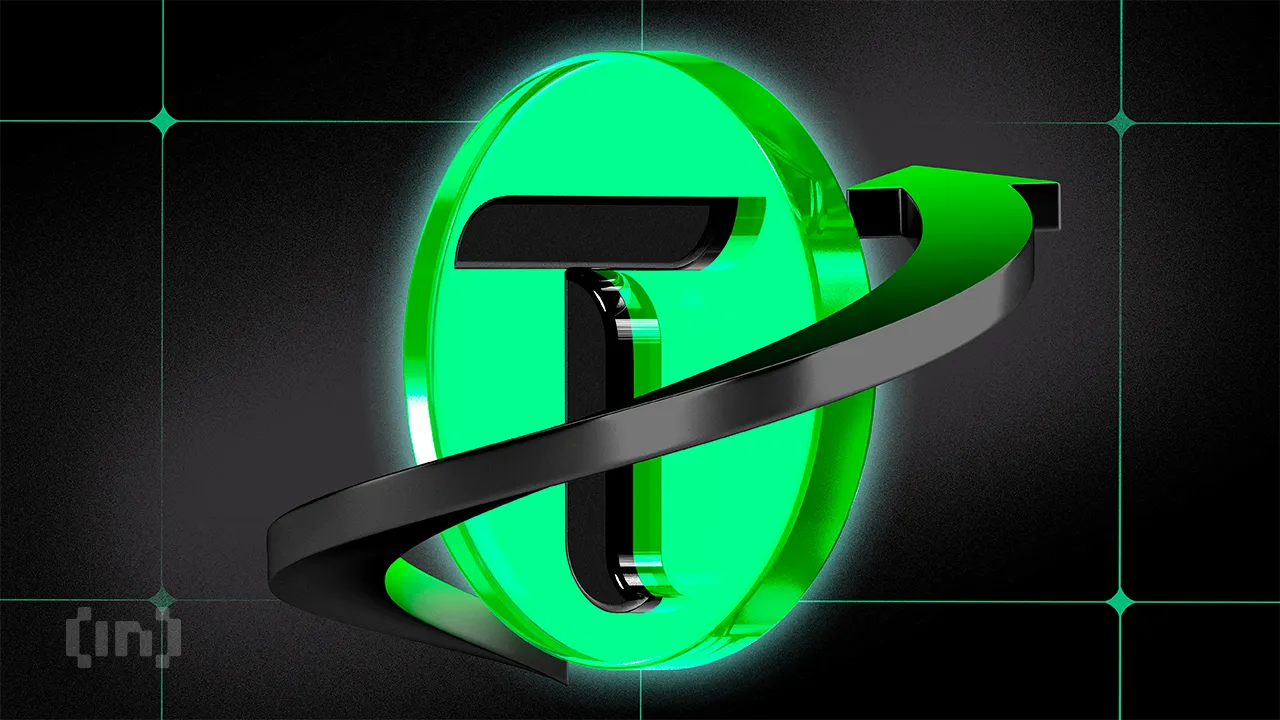
 Market21 hours ago
Market21 hours agoWill Bittensor Surpass Bitcoin as a Store of Value? Expert Predicts
-

 Market20 hours ago
Market20 hours agoEthereum Price Clings to Support—Upside Break Could Trigger Rally
-
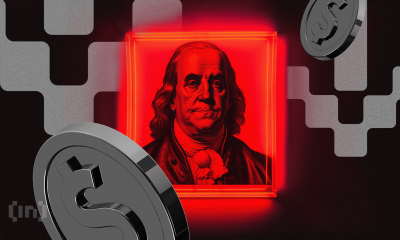
 Bitcoin20 hours ago
Bitcoin20 hours agoDollar Dips While Bitcoin Hits New Heights
-
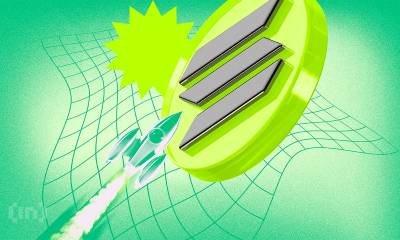
 Market19 hours ago
Market19 hours agoSolana Staking Cap Surpasses Ethereum, But Is This Sustainable?
-
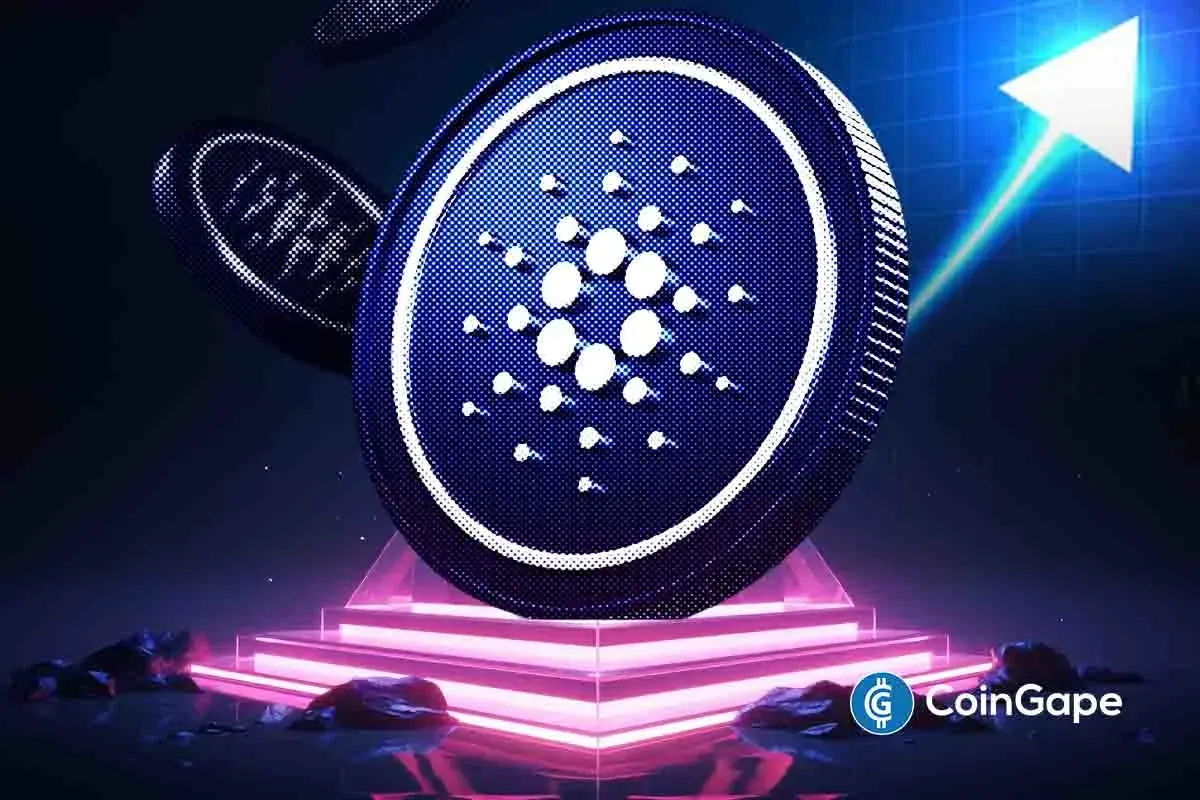
 Altcoin16 hours ago
Altcoin16 hours agoWill Cardano Price Break Out Soon? Triangle Pattern Hints at 27% ADA Surge









